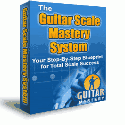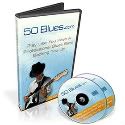Tablature was created as an easy way to share music and ideas for stringed instruments. Although many view it as a modern cheat sheet some of the earliest forms can be traced back to the 1300's. During that time the lute and other stringed instruments used it to notate many popular folk songs. Today it is most commonly associated with the guitar.
It has long been debated whether using guitar tablature is good or bad for the development of the player. While it is a stripped down version of standard notation I feel that is an essential part in the development of any guitar player.
As a musician it is important to be able to play by ear. Listening to a song and figuring out how to play it on your own is a rewarding experience and a vital learning tool as well. Using guitar tablature allows you to see where the notes should be played, while figuring out on your own how to play them.
When using guitar tablature as a learning tool a teacher can quickly explain and demonstrate what is written with out the student becoming confused with the notation.
So how do you read tablature?
The guitar tablature staff is composed of six lines instead of the traditional five found in standard notation. Each line represents a string on the guitar.
Here is where some people first get confused.
When you are looking at the staff always remember that the bottom line represents the sixth string on your guitar.
Don't know which is the sixth string?
When holding your guitar in your hands the sixth string will be the top fattest string on the guitar.
The top line on the staff is the first string and the bottom skinny string on your guitar.
Given that I think you can figure out which is the second, third, fourth, etc. :-)
That's half of what you need to know to start reading and writing basic guitar tabs.
Easy enough right?
On the staff of strings you will see numbers as in the example below. The numbers you see on each line represent the fret you need to place your finger on.

So where on the guitar would this be played?
If you said the third string, seventh fret then you are correct.
Their are two ways in which you will see the numbers laid out across the staff, horizontally and vertically.
When you see the numbers moving horizontally across the page from left to right they are sounded individually. Numbers that are stacked on the grid vertically are sounded together.
Here are examples of an e major chord written vertically so that all notes sound together and horizontally so that they are played one after another.


Using guitar tablature is a breeze but their are a few more advanced notations you should familiarize your self with.
Here is a list of other symbols you may encounter while reading tablature.
- h - When placed before the number tells you that the note is to be played using a hammer on.
- p - When placed after a number indicates a pull off.
- t - When found before a note means that you should tap the note with your right hand.
- / - This symbol placed before or after a note tells you that you need to slide your finger up or down to the next note.
- b - When placed before or after a note will tell you to bend the note.
- ( ) - You will typically see this after a bent note along with a number for example (9). This tells you that the target note of the bend is the 9th fret. On some occasions you will not see a b before the bend.
*Any note in paranthesis is assumed as a target note that is either bent up to from the previous note on the staff or first plucked in the bent position and then released to the next note on the staff.*
- ~ - This symbol indicates that you play the pitch with vibrato.
- x - An x is used to notate a string mute. Several in a row on adjacent strings will notate a rake.
- < > - Any number found surrounded with this symbol should be played as either a natural or artificial harmonic.
Now that you have a better understanding of how to use guitar tablature find some great tabs of the songs you like and use this tool to help you learn to play them. Learning to play songs in their entirety will greatly increase your playing and help inspire new ideas in your own playing. There are many sources on the internet that supply free guitar tabs of popular songs.






Post a Comment